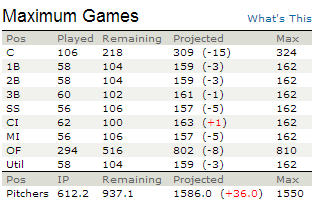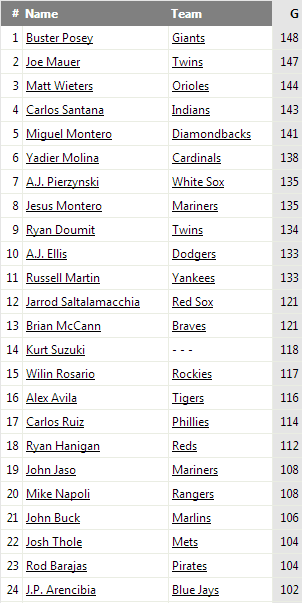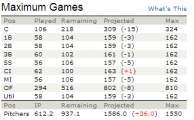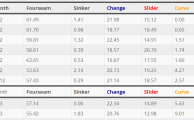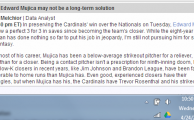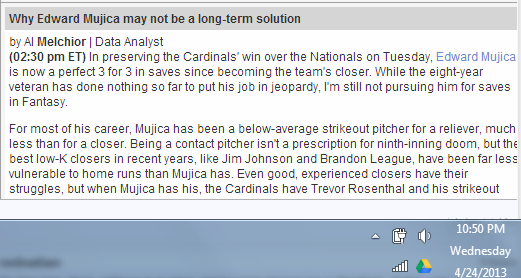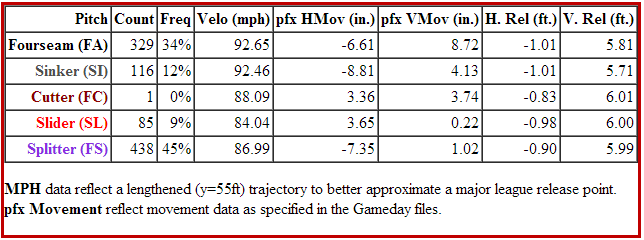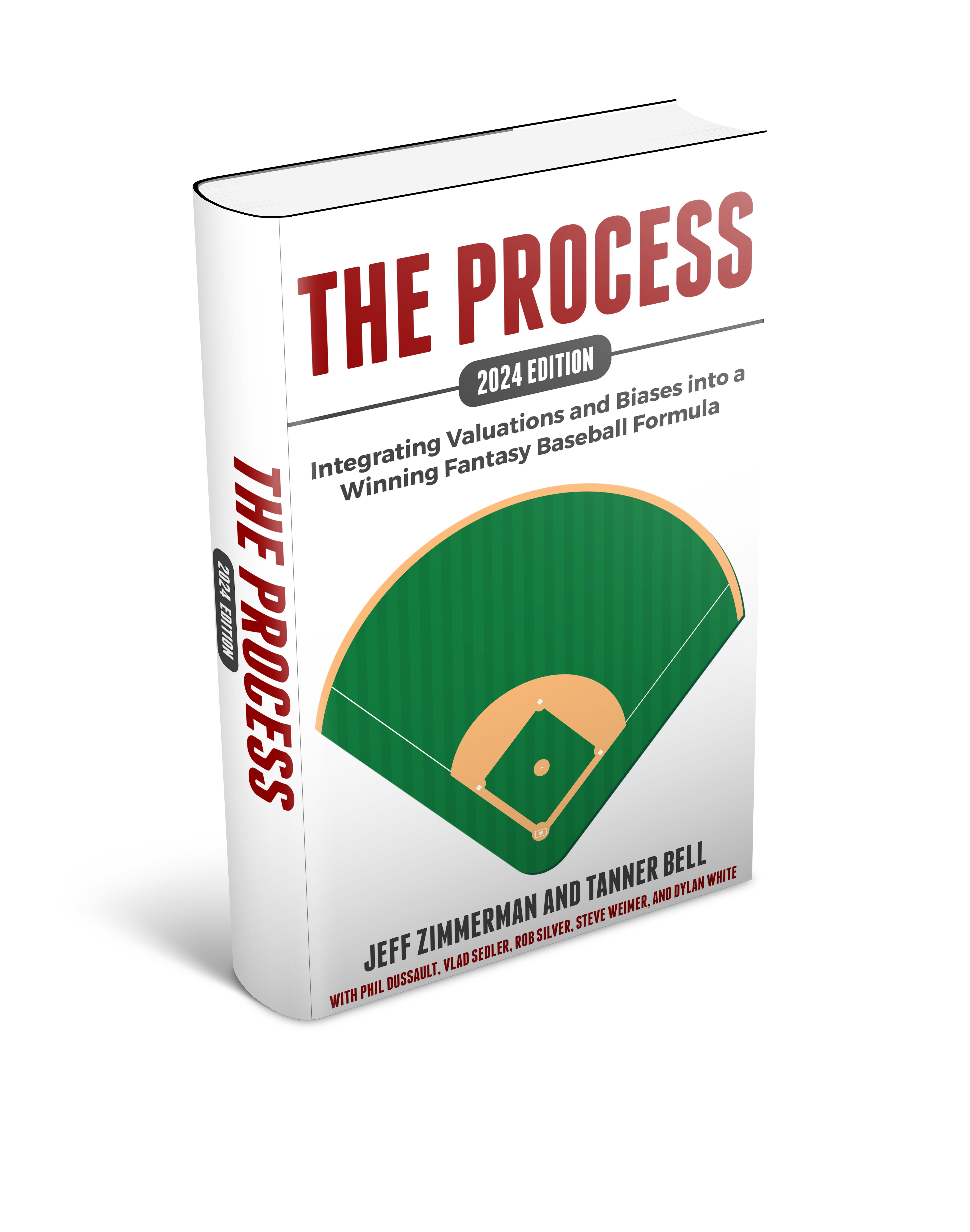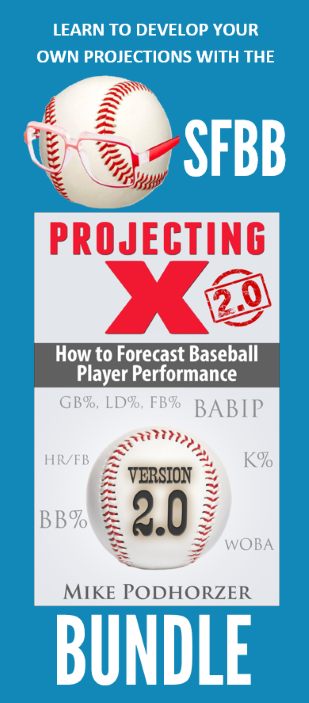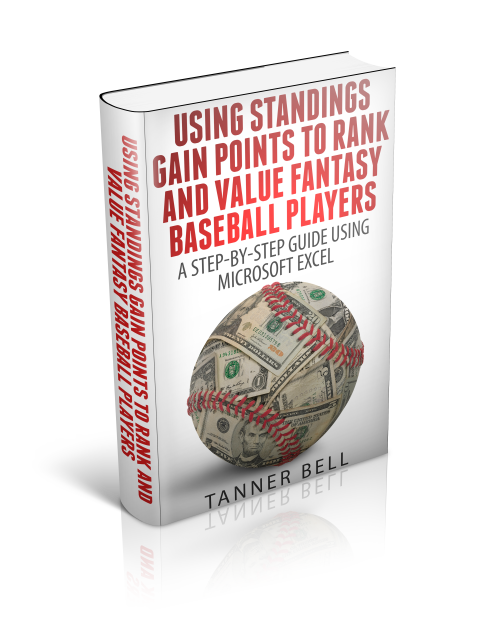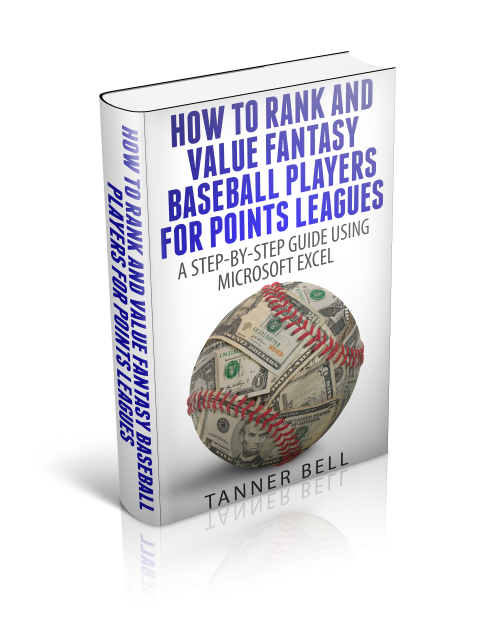Now that we have broken down the S.O.S. methodology, let’s dive into a closer look at the components. I’ll skip over the “Skills” component of S.O.S. I know. You’re thinking, “Wow, Tanner. Create a new three part methodology and you skip right over the first part.”
Yes. You caught me. But a main idea behind S.O.S. is that we are always thinking about the “Skills” component and we’re missing the “Opportunity” and “Surroundings” pieces.
Opportunity Knocks
Looking over the S.O.S. equation…
OUTPUT = SURROUNDINGS * (SKILLS * OPPORTUNITY)
… remember that “Skills” can be thought of as what a player would produce in 162 games (or 32 starts).
Because we start at 162 games or 32 starts, the “Opportunity” adjustment can only decrease the base projection. To the extreme, if a player has no opportunity to play, their 162 game output is reduced to nothing (you may recall from elementary school math that multiplying 35 possible home runs by zero playing time calculates out to 0 actual home runs).
Identifying “Opportunity” Information
News about opportunity will not come from fantasy experts first. Fantasy Experts are going to read or hear the information from a Major League Baseball writer (like Buster Olney, Ken Rosenthal, etc.) or a team’s beat writer. And not all news about opportunity will be picked up on or analyzed by fantasy writers immediately. With this in mind, if you’re looking for a way to get a small advantage over your competition, you should be in tune with not only fantasy news, but general MLB news. Click here for information on how to easily follow MLB experts, fantasy experts, and sabermetricians on Twitter.
Case Study
Look at these recent news items about the Toronto Blue Jays (you don’t need to read the links, just the headlines):
Besides the direct impact these news items have on Wells’, Reyes’, Lawrie’s, Bautista’s, and Kawasaki’s value, the cumulative effect of these stories has a potentially very big impact on another player.
You have to dig a little bit here. But it sure seems like Emilio Bonifacio’s playing time is under attack. The Blue Jays base-stealing star shortstop, Reyes, goes down with an injury. Rather than replace Reyes with Bonifacio, another base-stealer who has played 80 games played at SS in his career, they elect to go with the .192 hitting (in 104 AB in 2012) Kawasaki.
Not only that, but there is an effort being made to shift players, All-Star players, all over the diamond. Lawrie to 2B, where Bonifacio had played more games (9 at the time of writing) than any other position (5 in OF), and Bautista to 3B.
So they’re going to move Bonifacio to the OF, right? Perhaps, but the signing of Casper Wells, the presence of Colby Rasmus, Melky Cabrera, Rajai Davis and Mark DeRosa might make playing time scarce. And none of the news articles even mention Anthony Gose in the minor leagues.
You aren’t going to see a fantasy analyst write a big article about Emilio Bonifacio’s playing time. I did see quite a bit of buzz about Lawrie and Bautista picking up position eligibity and how it affects their value. But nary a mention of Bonifacio. The point being that the analysts aren’t going to catch everything. There is still room for your own critical thinking to create an advantage for you.
*After I came up with this case study to illustrate my point, Casper Wells was designated for assignment, Jose Bautista missed his fourth straight game with back problems, and Lawrie has only played 3B since his return from the DL. But you still get the idea, right? Perhaps Bonifacio won’t see his playing time affected.
Conclusion
There is an advantage to be gained by keeping up to date with MLB news and then by thinking critically about that news. Take your thinking to the next level. Who else does this affect? What are the intentions behind this move? What related move could be coming next?
Consume a lot of Major League Baseball news. This will allow you access to additional news items that those who only read fantasy advice might not get.
Baseball news is also available sooner than fantasy analysis. It may take hours or days for fantasy analysts to identify, analyze, and write quality content about an event or news item.
Thanks For Reading.
Stay smart.
